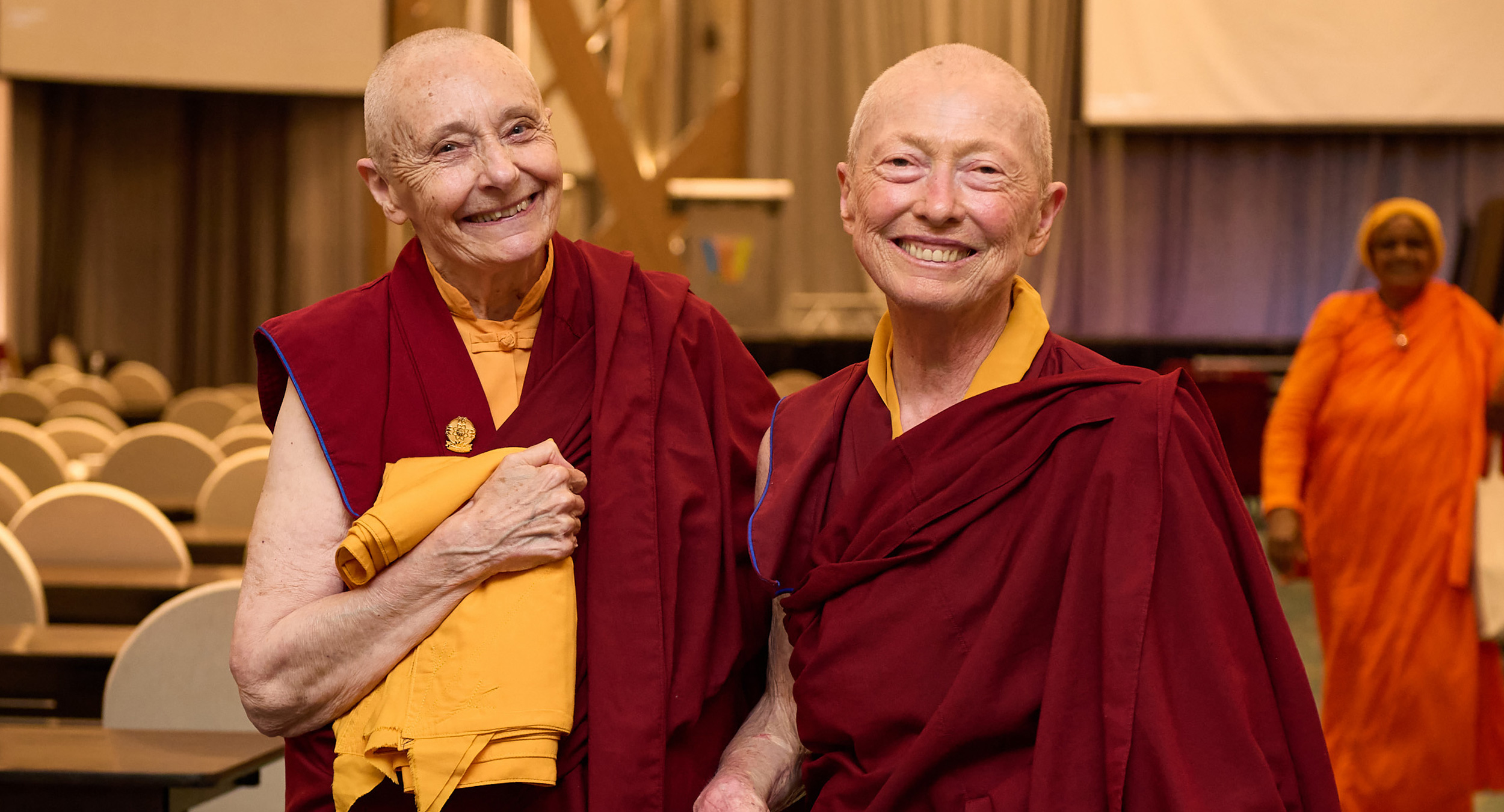Siddhis: Definition, Types, Tips and Dangers
The ancient yogis discovered extraordinary powers that lie dormant within us, waiting to be awakened. Through a journey of deep meditation and self-realization, they unlocked the immense potential of the human mind and encountered the realm of siddhis—the divine...

The ancient yogis discovered extraordinary powers that lie dormant within us, waiting to be awakened. Through a journey of deep meditation and self-realization, they unlocked the immense potential of the human mind and encountered the realm of siddhis—the divine abilities that transcend the limitations of the physical world. From clairvoyance and telepathy to levitation and materialization, siddhis showcase the boundless nature of human consciousness. But beware, for along this path, dangers and pitfalls await the unwary seeker. It is essential to approach the pursuit of siddhis with utmost caution and reverence, for these powers are not to be taken lightly.
While these powers may seem fascinating and alluring, it is important to understand their nature, types, tips for cultivation, and potential dangers.
What is a siddhi?
The word Siddhi in Sanskrit means “attainment” or “accomplishment”. In the yogic tradition, Siddhi refers to magical powers, psychic capabilities or extraordinary strengths that can be achieved through an intense sadhana of meditation, yoga, tapas, repetition of mantras, and the cultivation of spiritual energy. These occult powers can arise due to a fortuitous birth, but are often a byproduct of spiritual advancement and can manifest in various forms.
The ancient sage Patanjali sheds light on Siddhis in his revered text, the Yoga Sutras. Patanjali warns practitioners that Siddhis should not be the ultimate goal of their spiritual journey. Instead, they should focus on achieving self-realization and union with the divine. These extraordinary powers are considered distractions on the path to enlightenment and can even become obstacles to our spiritual progress if one becomes attached to them. Therefore, when these supernormal abilities manifest, they should be viewed as guideposts on the path of spiritual awakening, rather than the destination itself.
Types of siddhi
The ancient yogis discovered various types of supernatural powers and psychic abilities that can be developed through intense yogic practices. These abilities are diverse and can manifest in different individuals based on their unique spiritual journey.
There are two main types—the lower or lessor siddhis and the higher siddhis. The lower siddhis include physical manifestations such as enhanced sensory perception, heightened intuition, clairvoyance, and the ability to heal others. These abilities, although extraordinary, are considered to be mere stepping stones on the path to enlightenment.
The lower siddhis can be activated through various artificial means, like the use of drugs, breathing techniques, or even certain rituals. However, these methods are not recommended as they can have negative side effects, yield only temporary results, and may hinder one’s spiritual progress.
The higher siddhis are more transcendental and are said to be achieved through deep spiritual practice and purification of the mind and body. They go beyond the realm of the physical and allow the practitioner to experience profound states of consciousness. Examples of higher siddhis include levitation, materialization, and the ability to travel between dimensions. The higher siddhis are not tied to any egoistic desires, but are pursued with the sole purpose of expanding one’s spiritual awareness.
Ashta siddhi
There are said to be eight classical siddhis, known as ashta siddhi, as mentioned in Patanjali’s Yoga Sutras. They are anima (becoming infinitely small), mahima (becoming infinitely large), laghima (becoming weightless), garima (becoming heavy), prapti (attaining anything desired), prakamya (fulfilling any wish), ishitva (having absolute control), and vashitva (having the power to subdue others).
Vaishnava and Samkhya siddhis
The Vaishnava tradition recognizes five primary siddhis, or supernatural powers, and ten secondary siddhis. These are believed to be bestowed upon devoted practitioners as a result of their unwavering faith and commitment to the divine. The Samkhya tradition emphasizes the attainment of eight siddhis, which are aimed at liberating individuals from ignorance and bestowing them with profound knowledge and bliss. These siddhis are considered essential for guiding aspirants along the path of self-realization and spiritual enlightenment.
List of 31 siddhis
Sanskrit Name | Translation | Category |
| Anima | The ability to reduce one’s body to the size of an atom. | Classical |
| Mahima | The ability to expand one’s body to an infinitely large size. | Classical |
| Laghima | The ability to become weightless or lighter than air. | Classical |
| Garima | The ability to become heavy or dense. | Classical |
| Prapti | The ability to realize or achieve whatever one desires. | Classical |
| Prakamya | The ability to access any place in the world or universe. | Classical |
| Isitva | The ability to control all material elements or natural forces. | Classical |
| Vashitva | The ability to subdue or force influence upon anyone. | Classical |
| Trikala-jnatvam | Ability to know the past, present and future. | Vaishnava |
| Advandvam | Ability to endure extremes of heat, cold, and other dualities. | Vaishnava |
| Para citta adi abhijnata | Ability to know and understand the minds of others of others. | Vaishnava |
| Agni arka ambu visa adinam pratistambhah | Ability to resist or neutralize the effects of the influence of fire, sun, water, poison, etc. | Vaishnava |
| Aparajayah | Remaining unconquered or defeated by others. | Vaishnava |
| Anurminattvam | Being undisturbed by hunger, thirst, and other bodily appetites. | Vaishnava |
| Durashravana | Ability to hear distant sounds. | Vaishnava |
| Duradarshanam | Ability to see distant objects. | Vaishnava |
| Manojavah | Ability to move at the speed of thought (teleportation/astral projection). | Vaishnava |
| Kamarupam | Assuming any form desired. | Vaishnava |
| Parakaya pravesanam | Entering the bodies of others. | Vaishnava |
| Svachanda mrtyuh | Ability to die at will. | Vaishnava |
| Devanam saha krida anudarshanam | Witnessing and participating in the pastimes of the gods. | Vaishnava |
| Yatha sankalpa samsiddhih | Perfect accomplishment of one’s determination. | Vaishnava |
| Ajnapratihtata gatih | Orders or commands being unimpeded. | Vaishnava |
| Uuha | Attainment of knowledge about the twenty-four tattvas gained by examining the determinable and indeterminable, conscious and non-conscious constituents of creation. | Samkhya |
| Shabda | Knowledge gained by associating with an enlightened person. | Samkhya |
| Addhyyan | Knowledge gained through study of the Vedas and other standard ancillary texts. | Samkhya |
| Suhritprapti | Knowledge gained from a kind-hearted person, while engaged in the spread of knowledge. | Samkhya |
| Daan | Knowledge gained regardless of one’s own needs while attending to the requirements of those engaged in the search of the highest truth. | Samkhya |
| Aadhyaatmik dukkh-haan | Freedom from pain, disappointment, etc. that may arise due to lack of spiritual, metaphysical, mystic knowledge and experience. | Samkhya |
| Aadhibhautik dukkh-haan | Freedom from pain etc. arising from possessing and being attached to various materialistic gains. | Samkhya |
| Aadhidaivik dukkh-haan | Freedom from pain etc. caused by fate or due to reliance on fate. | Samkhya |
Are siddhis real?
The physical existence of siddhis is a topic of debate and skepticism. While some people believe in the reality of these powers based on their own experiences or the accounts of others, others argue that these abilities are merely symbolic or metaphorical representations of spiritual progress rather than literal superhuman powers.
From a scientific perspective, there is limited empirical evidence to prove the existence of siddhis. The nature of these powers makes them difficult to study using conventional scientific methods. The concept of these yogic powers falls outside the realm of mainstream scientific understanding and is often considered paranormal or pseudoscientific. These psychic abilities involve subjective experiences that are challenging to reproduce in controlled laboratory settings. Additionally, the spiritual nature of siddhis makes it hard to fit them into the framework of traditional scientific inquiry.
From a yogic perspective, the practices of deep meditation, self-discipline, and the purification of the mind and body can create altered states of consciousness which manifest as the experience of magical powers. On a psychological level, the siddhis can be perceived to be real experiences, while at the same time not being seen from an external point of view.
It is important to approach the subject of siddhis with a critical mindset. Scientific evidence validating the existence of these powers is scarce, and empirical studies on them are limited. Most accounts of individuals possessing siddhi powers come from anecdotal evidence or historical texts that are open to interpretation. Also, many claims of siddhis have been attributed to illusions, tricks and fraudulent claims by charlatans who exploit people’s belief in these powers for personal gain.
The quest for siddhi
It is crucial to approach the quest for Siddhi with a balanced mindset, remaining grounded in ethical principles of the yamas and niyamas and guided by spiritual teachings. The exploration of yogic powers should be approached with humility, a genuine intention for spiritual growth, and under the guidance of an experienced spiritual teacher to ensure a balanced and ethical journey.
According to Patanjali, in order for the siddhis to appear, one must first gain mastery over Samyama—the final three stages of the eightfold path. These stages involve the powerful ability to maintain concentration, meditation, and samadhi all at once, with complete control and focus. It is through this mastery that individuals can unlock the psychic powers of the mind.
This practice begins with cultivating a deep and unwavering focus, honing the mind’s ability to concentrate on a single point. This concentration is then refined through meditation, allowing for a profound sense of inner calm and clarity. As the mind becomes still for long periods of time, the practitioner gains access to higher states of consciousness and subtle energies of the body, tapping into the wellspring of untapped potential within.
Dangers and pitfalls
As we traverse along this spiritual journey, it is important to be aware of the potential dangers and pitfalls that may arise when experiencing supernatural powers. While siddhis can be powerful and awe-inspiring, they can also become a source of distraction, confusion, and egoic attachment if not approached with caution and wisdom.
One of the primary dangers of advancing in siddhis is the temptation to become attached to these abilities, leading to a sense of superiority or spiritual arrogance. This can create a false sense of identity and hinder spiritual growth. It is essential to remember that siddhis are not the ultimate goal of our spiritual practice, but rather a byproduct of it. Therefore, maintaining a humble and grounded attitude is crucial to avoid falling into the egoic trap.
Relying and focusing too heavily on siddhis can hinder our overall spiritual progress. The overemphasis on external manifestations and extraordinary abilities can detract from the deeper, inner work that is necessary for true spiritual transformation and realizing our true nature. It is important to remember that these powers are just tools and should not become the sole focus of our practice. Instead, we should strive for a balanced approach, integrating our siddhis with other aspects of our spiritual path, such as mindfulness, compassion, and self-inquiry.
Another danger lies in the misuse of siddhis. When we possess extraordinary abilities, the temptation to use them for personal gain or manipulation can arise. This goes against the ethical principles that underpin spiritual development and can have negative consequences not only for ourselves but also for those around us. It is important to use siddhis with a sense of responsibility and for the benefit of all beings, rather than for personal gain or egoic satisfaction. It is crucial to always align our actions with the highest good and to use any psychic abilities we may possess for the benefit of all beings.
Another danger to be aware of is the potential for spiritual bypassing or using siddhis as a means to escape or avoid facing unresolved emotional or psychological issues. They should never be used as a substitute for inner healing and personal growth. It is imperative to continue doing the inner work necessary to address any underlying issues and cultivate emotional intelligence alongside the development of siddhis.
The quest for Siddhi may also bring about physical and mental challenges, such as exhaustion, imbalances, or even spiritual crises. It is not uncommon for individuals who become too focused on developing siddhis to neglect other aspects of their overall well-being. This can lead to physical exhaustion as they push their bodies beyond their limits in pursuit of these supernatural abilities. It is important to remember that spiritual growth is a holistic journey that encompasses physical, mental, and emotional well-being.
Sometimes, the pursuit of siddhis can become an obsession, causing individuals to neglect their personal responsibilities in favor of spiritual pursuits. It is vital to maintain a balance between our spiritual development and our commitments in the physical world. Neglecting our relationships, work, and other obligations can lead to negative consequences and hinder our overall well-being.
Additionally, the pursuit of siddhis can also create imbalances within the mind and emotions. As we become more invested in these extraordinary abilities, it is easy to lose sight of the importance of cultivating inner peace, compassion, and selflessness. It is crucial to maintain a balance between the development of siddhis and the cultivation of qualities that contribute to our overall spiritual growth.
Furthermore, spiritual crises can occur when individuals become too fixated on the pursuit of siddhis. These crises can manifest as a loss of direction, confusion, or even a sense of detachment from reality. It is important to approach the development of siddhis with a strong foundation in spiritual teachings, guidance from a qualified teacher, and a deep commitment to one’s own inner growth.
Tips for safely exploring siddhis
To avoid the dangers and pitfalls of manifesting yogic powers, it is recommended to practice the following tips:
Cultivate humility: Recognize that siddhis are not a measure of spiritual attainment. Stay humble and maintain a sense of gratitude for the progress made on the spiritual path.Seek guidance from a qualified teacher: Find a spiritual teacher who has experience with siddhis and can guide you through the challenges that may arise. Their wisdom and guidance can help you navigate the pitfalls and keep your practice on track.Practice the yamas and niyamas: The yamas and niyamas are ethical principles and codes of conduct that form the foundation of a spiritual practice. The yamas, or restraints, include non-violence, truthfulness, non-stealing, celibacy, and non-possessiveness. The niyamas, or observances, encompass purity, contentment, self-discipline, self-study, and surrender to a higher power. These ethical guidelines serve as guardrails to navigate the path of Siddhis with a strong moral compass and ensure that they are used for the greater good.Prioritize self-care: Do not neglect your physical and emotional well-being in pursuit of siddhis. Engage in regular exercise, maintain healthy relationships, and take time for self-reflection and self-care practices.Develop discernment: Not all siddhis are created equal, and not all experiences that may seem like siddhis are authentic. It is crucial to develop discernment and differentiate between genuine spiritual experiences and mere illusions. This discernment can help you avoid being misled or lured into deceptive practices that may have negative consequences.Embrace detachment: Cultivate a sense of detachment towards siddhis and the outcomes they bring. Understand that they are impermanent and ultimately not the goal of spiritual practice. By letting go of attachment, you can avoid becoming consumed by the pursuit of siddhis and stay focused on the deeper aspects of your spiritual journey.Regularly assess your intentions: Constantly examine your intentions behind seeking and developing siddhis. Ensure that your motivations are pure and aligned with the greater good. If you find any selfish or ego-driven desires, consciously work to redirect your focus towards selflessness and service to others.Stay grounded: Siddhis can be seductive and can easily lead to ego inflation. Practice mindfulness and meditation to stay rooted in the present moment and to maintain a balanced perspective.Establish a solid foundation of spiritual discipline: By cultivating discipline, you create a strong inner container to hold the energies and experiences that may arise through siddhis. This includes maintaining a regular meditation practice, studying sacred texts or teachings, engaging in self-reflection, and following ethical principles such as non-violence, truthfulness, and non-attachment. By grounding yourself in these practices, you cultivate a stable and clear mind, which helps to keep the pursuit of siddhis in perspective.Final thoughts
As we deepen our understanding and practice of yoga, the Siddhi powers become an intriguing topic to explore. Use the knowledge of these extraordinary abilities to inspire you to dive deeper into your practice and study of yoga and meditation. While siddhis may seem alluring, it is important to approach them with reverence, self-awareness, humility, and a sense of responsibility.

 Lynk
Lynk 
































